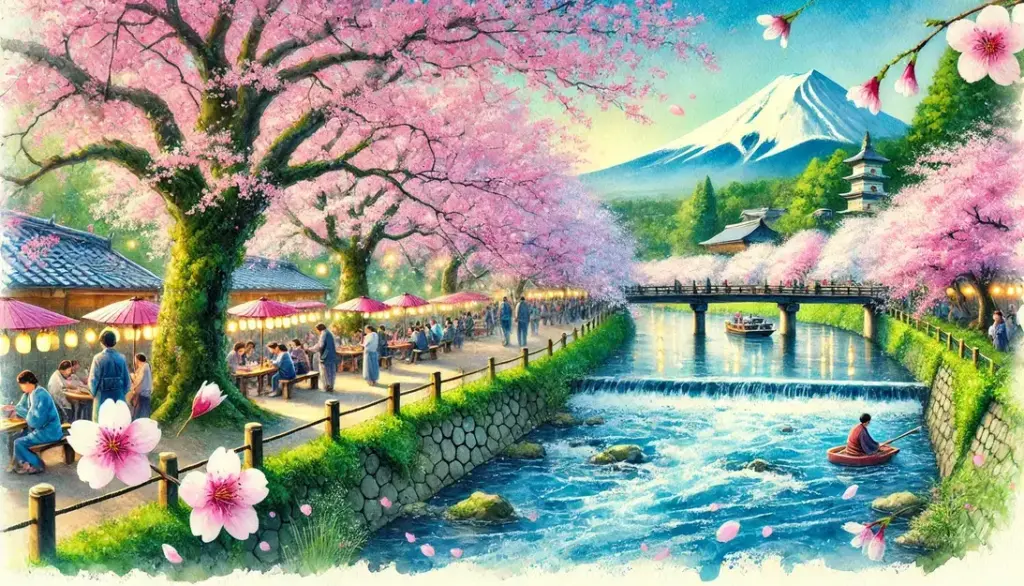The fleeting beauty of sakura, or cherry blossoms, draws millions to Japan every spring. These delicate pink and white flowers symbolize renewal and life’s transience, a core principle in Japanese culture. Visitors worldwide come to witness this iconic bloom, planning months ahead to experience the magic. If you’re wondering how to see Sakura bloom in Japan, it’s all about timing and location. The season unfolds like a graceful wave from Tokyo in late March to Hokkaido in early May. In this guide, you’ll learn when and where to go to make the most of this breathtaking phenomenon.
What is Sakura Bloom?
Sakura, or cherry blossoms, are more than just flowers in Japan; they are part of the country’s identity. Every spring, the arrival of sakura sparks a nationwide celebration, drawing tourists and locals alike to marvel at their beauty. These delicate pink and white blossoms are not only visually stunning but hold deep cultural and symbolic significance for Japan.
The Cultural Importance of Hanami
Hanami, which simply means “flower viewing,” is an ancient Japanese tradition dedicated to enjoying the beauty of cherry blossoms. This practice dates back to over 1,000 years ago during Japan’s Heian period, where aristocrats would gather under blooming trees, composing poetry inspired by the blossoms. Over time, this elitist activity transformed into a celebration for everyone.
Hanami is more than a picnic under cherry trees—it’s a cherished social event. Families, friends, and co-workers come together, often spreading mats beneath blooming sakura to share food, drinks, and laughter. The festive atmosphere is heightened at night, with yozakura (night viewing) events featuring illuminated trees that glow ethereally against the dark sky.
But why is this tradition so significant? Sakura blooming season is fleeting, lasting only a week or two. This impermanence captures the Japanese philosophy of “mono no aware,” or an acceptance of life’s transience. Hanami serves as a joyful yet reflective reminder of the beauty and brevity of life.
For an insightful guide on the history of hanami, visit Hanami: Cherry Blossom Culture in Japan.
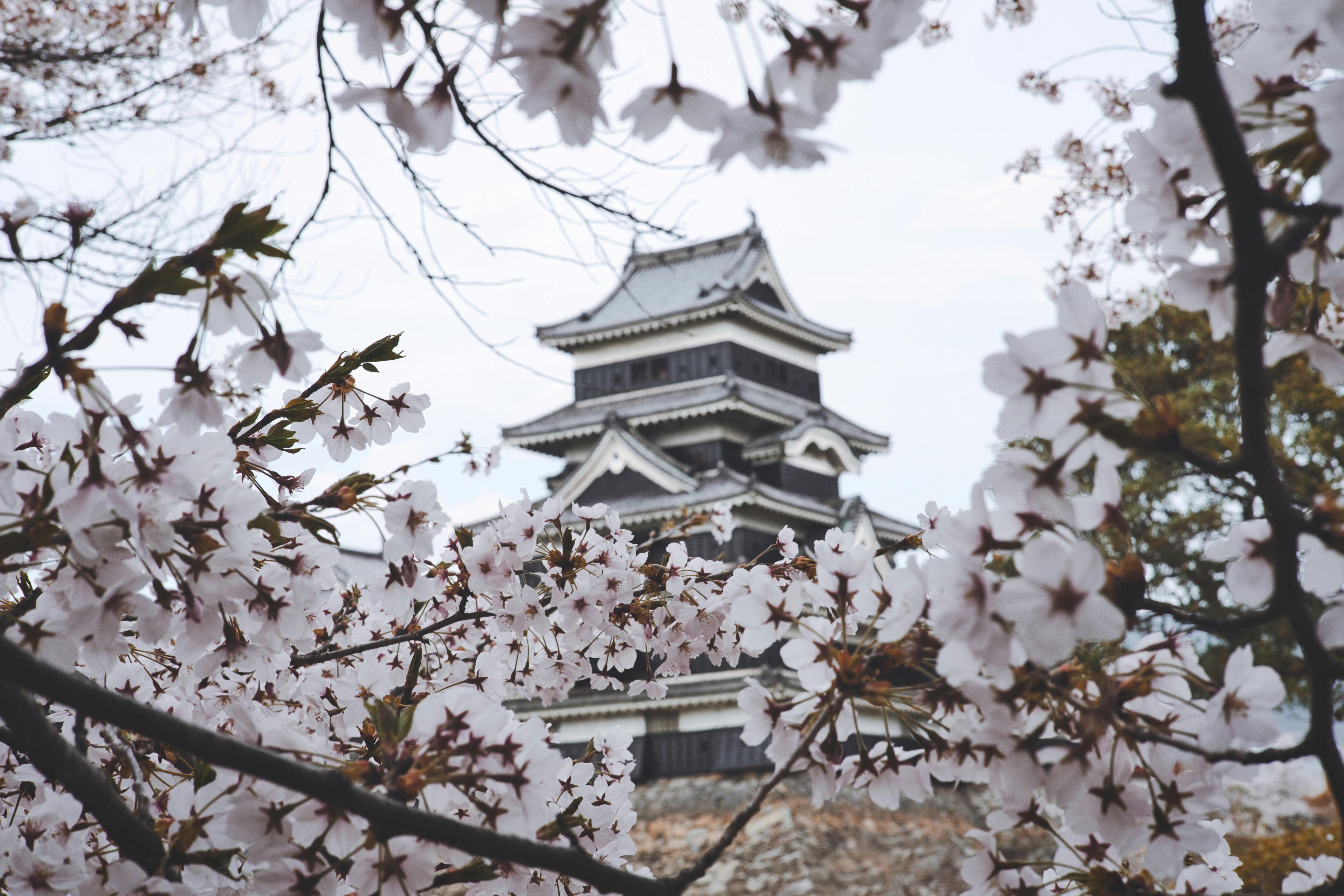
Photo by Evgeny Tchebotarev
Sakura and its Symbolism
In Japanese culture, sakura blossoms are revered for their profound symbolism. They represent beauty, renewal, and the fleeting nature of life. Their brief bloom mirrors the impermanent nature of existence, a concept deeply rooted in Buddhist philosophy. Each petal’s fall is a poignant reminder that all things, no matter how beautiful, are temporary.
More than that, sakura represents renewal and hope. The blossoms coincide with Japan’s school and fiscal year, which both begin in April. For many, the sakura season marks a fresh start, much like New Year’s celebrations in other cultures. It’s a time to reflect, let go of the past, and embrace new beginnings.
The symbolic beauty of sakura extends to everyday Japanese life. You’ll see their motifs on kimonos, artwork, and even popular snacks and drinks during the spring season. Throughout history, samurai and soldiers also linked cherry blossoms to honor and the sacrifice of life, as they represented both the fragility and dignity of existence.
For more on the cultural symbolism of cherry blossoms, explore Sakura Meaning: The Cultural Symbolism of Cherry Blossoms.
When to See Sakura Bloom in Japan
The timing of cherry blossoms in Japan isn’t just about catching beautiful blooms; it’s a strategic affair. Knowing when to plan your visit can make or break the experience with the sakura season varying depending on location and climate. Below, we’ll explore the key dates, regional bloom patterns, and tips for ensuring your trip aligns perfectly with nature’s schedule.
Sakura Bloom Forecast for 2025
Planning ahead is essential for Sakura enthusiasts. In 2025, the forecast shows cherry blossoms starting slightly earlier than usual in some regions. Here are the estimated bloom dates for major locations:
- Tokyo: Blossoms are expected to start on March 24, with full bloom (mankai) around March 31.
- Kyoto: The flowers will likely begin flowering by March 27, reaching full bloom by April 4.
- Hokkaido: The northernmost island sees a later bloom, starting on May 1 and peaking by May 5.
Remember, forecasts can change depending on the weather, but these dates provide a reliable framework for planning. For the most updated information, visit Japan Cherry Blossoms Season 2025: Complete Guide to Sakura Viewing.
South-to-North Bloom Progression
Japan’s sakura bloom moves like a graceful wave from south to north due to the country’s geographical layout. Here’s how it typically unfolds:
- Southern Japan (Kyushu, Shikoku): The first blossoms open in warmer regions, such as Fukuoka and Kochi, around late March.
- Central Honshu: Areas like Kyoto, Osaka, and Tokyo follow in late March to early April.
- Northern Japan: Cooler areas like Sendai welcome blooms by mid-April, while Hokkaido wraps the season from late April to early May.
This progression provides a “second chance” if you missed the earlier blooms. Planning your travel route following this south-to-north sequence ensures you’ll likely catch the best views wherever you go.
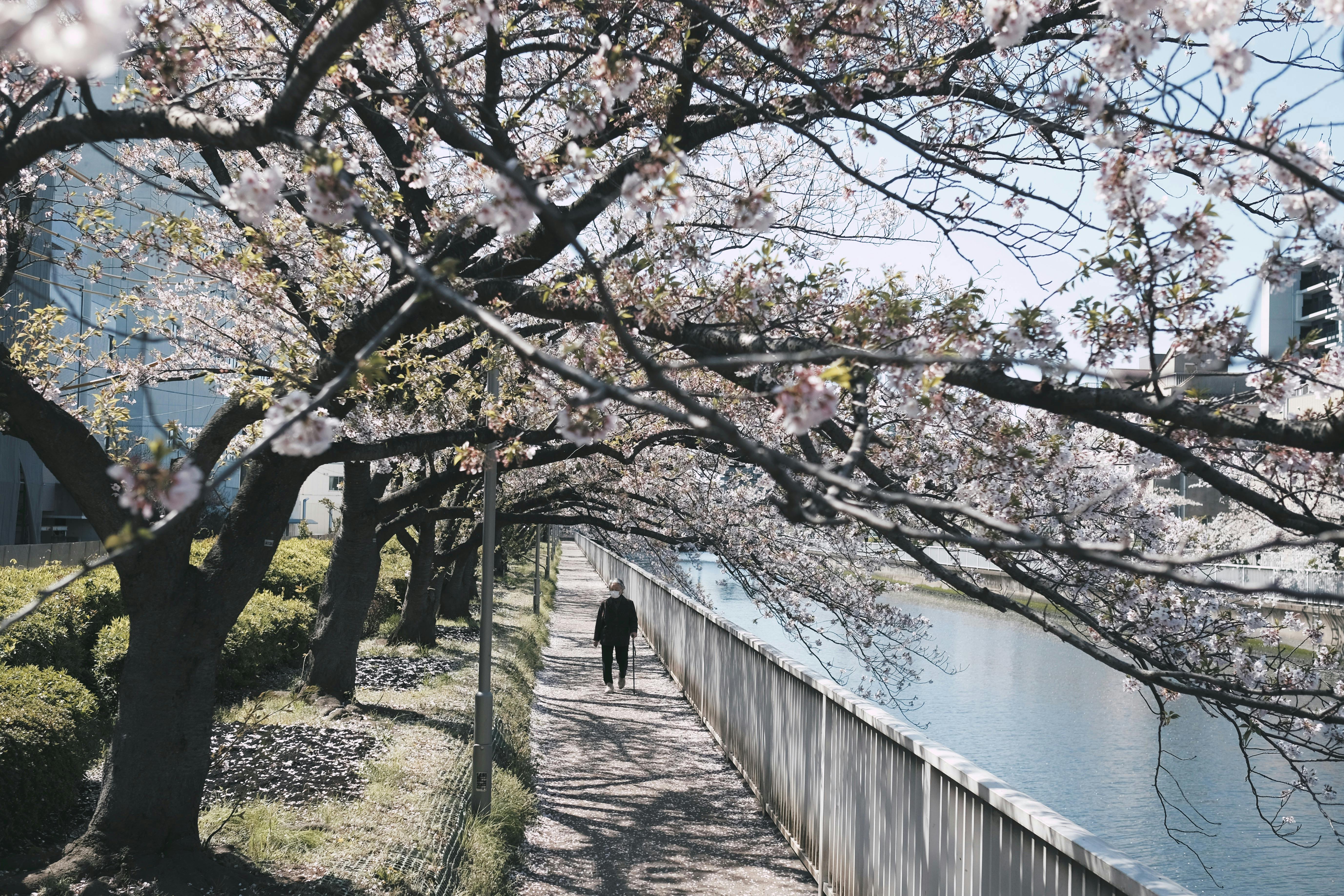
Photo by Evgeny Tchebotarev
Tips for Timing Your Trip
How can you ensure your Japan adventure aligns perfectly with peak bloom periods? Here are a few simple yet effective strategies:
- Monitor Real-Time Updates: Follow platforms like the Japan Meteorological Corporation for regular updates as bloom dates can shift quickly based on weather.
- Flexibility: If possible, keep your travel schedule flexible, allowing you to hop between regions if bloom dates vary.
- Plan Picnics in Advance: Sakura viewing spots can get crowded, so arriving early or reserving spaces in advance will enhance your hanami experience.
- Consider Weekdays: Weekends are peak crowd times; visiting on weekdays can offer a more serene experience.
By combining proactive planning with real-time information, you’re setting yourself up for a truly magical Sakura experience in Japan.
Best Places to See Sakura Bloom in Japan
Japan is famous for its breathtaking cherry blossom season, drawing visitors worldwide for hanami or flower viewing. Whether you’re visiting bustling cities or tranquil countryside, the country offers a variety of spots to enjoy these delicate blooms. Here’s your guide to the best places to experience the beauty of sakura.
Famous Parks and Gardens
When it comes to iconic Sakura viewing, Tokyo offers some of the most celebrated spots in the country.
- Ueno Park: One of Tokyo’s most visited parks, Ueno is home to over 1,000 cherry trees lining its pathways. The park buzzes with energy during sakura season as locals and tourists enjoy picnics under the blooming branches. Stop by early in the morning to secure a good spot or experience the magic of illuminated trees at night. Learn more about the festivities at Ueno Cherry Blossom Festival.
- Shinjuku Gyoen: If you’re looking for a quieter escape within the city, Shinjuku Gyoen is a haven of beauty. This vast park boasts over 1,000 cherry trees of different varieties, allowing you to catch blooms spanning the entire season. For tips on visiting during cherry blossom season, explore Shinjuku Gyoen Cherry Blossom Guide.
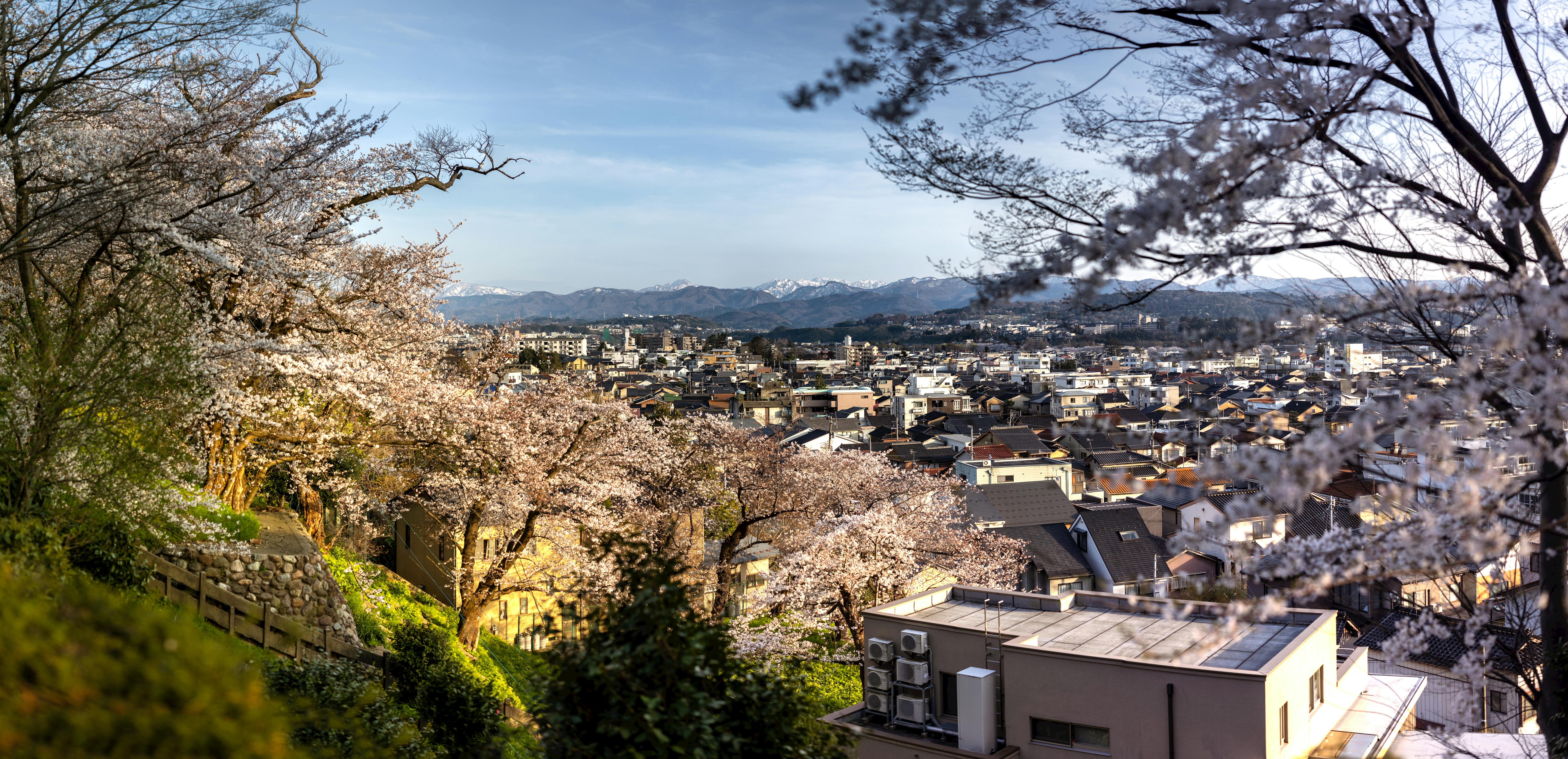
Photo by Marek Piwnicki
Historic Landmarks and Castles
Few sights combine sakura season with cultural history more elegantly than Japan’s historic castles and landmarks.
- Himeji Castle: Called the “White Heron Castle,” Himeji Castle is a UNESCO World Heritage site surrounded by sakura trees. The contrast of cherry blossoms against its towering, white walls creates a photo-perfect moment. Visit Himeji Castle Cherry Blossoms for details.
- Matsumoto Castle: Known as the “Crow Castle” for its black exterior, Matsumoto is stunning when framed by pink blossoms. Stroll around the castle moat to fully soak in the beauty of its seasonal transformation.
Natural Landscapes
For those who prefer nature’s grandeur, Japan has plenty of scenic spots where sakura blooms meet natural wonders.
- Mount Yoshino: Often hailed as Japan’s top cherry blossom destination, this mountain in Nara features over 30,000 cherry trees. Visitors can hike through different elevations to witness varying stages of bloom. Check the latest bloom updates at Mount Yoshino Cherry Blossoms.
- Lake Kawaguchi: Want an iconic shot of Mount Fuji framed by cherry blossoms? Head to Lake Kawaguchi in the Fuji Five Lakes area. The reflection of Fuji and pink blossoms in the water is a scene straight out of a painting. Discover Cherry Blossom Locations Near Lake Kawaguchi.
Hidden Gems and Lesser-Known Spots
Escape the crowds by finding less-visited sakura viewing locations for a serene experience.
- Kameoka, Kyoto: Kameoka’s Yawaragi Road offers a peaceful walking path lined with over 1,500 cherry blossom trees. The variety of blooms is mesmerizing and perfect for a relaxed stroll. Learn about this gem at Hidden Spots for Cherry Blossoms in Kyoto.
- Kinuta Park, Tokyo: Away from the busy tourist spots, Kinuta Park provides a quieter setting to enjoy hanami. The lush greenery combined with dozens of sakura trees creates a calming atmosphere. Explore more secluded options at Hidden Cherry Blossom Spots in Tokyo.
Whether you prefer bustling parks, historic castles, or quiet countryside escapes, these spots are sure to make your sakura journey in Japan unforgettable.
How to Prepare for Your Sakura Viewing Trip
Spring in Japan is synonymous with the breathtaking beauty of cherry blossoms. To fully enjoy this once-a-year wonder, preparation is key. From securing accommodations to understanding transportation, here’s how to plan your trip for an unforgettable sakura experience.
Booking Your Accommodation Early
Planning to visit Japan during cherry blossom season? It’s one of the busiest travel seasons in the country, and accommodations tend to fill up quickly. Hotels, guesthouses, and ryokan (traditional inns) near popular sakura spots often get booked months in advance.
To avoid last-minute hassles, start your research early. Aim to secure reservations at least 6–8 months ahead of your trip, especially if you’re visiting iconic cities like Kyoto, Tokyo, or Osaka. Homestays and budget-friendly options like capsule hotels are great alternatives if mainstream accommodations are unavailable. Platforms like Rakuten Travel can help streamline your booking process.
Using Transportation Effectively
Traveling efficiently in Japan during sakura season requires smart use of the country’s transportation network. The Japan Rail Pass becomes your best friend when covering long distances between cherry blossom cities such as Tokyo, Kyoto, and Fukuoka. This pass offers unlimited rides on eligible trains, making it a cost-effective choice for tourists.
For local travel, consider prepaid IC cards like Suica or Pasmo for seamless access to subways and buses. Major sakura spots are often accessible via public transportation, so check ahead and plan your routes. If you’re visiting more rural areas, renting a car can be a good option, though make sure to book in advance.
Packing Essentials for Sakura Season
Spring weather in Japan can be a mixed bag, ranging from warm, sunny days to unexpected bouts of rain and chilly evenings. Packing wisely ensures you’re prepared no matter the conditions.
Here’s what you should bring:
- Comfortable walking shoes: Many sakura spots involve strolling through parks or climbing hills.
- Weather-appropriate clothing: Layers, like light jackets and sweaters, work best for fluctuating temperatures.
- Rain gear: A compact umbrella or foldable raincoat is handy for sudden showers.
- Reusable picnic mat or blanket: Perfect for enjoying hanami under the blossoms.
- Camera or smartphone with storage: You’ll want to capture every pink-and-white moment.
Pro tip: Don’t forget travel essentials like sunscreen and a reusable water bottle. You’ll be spending a lot of time outdoors!
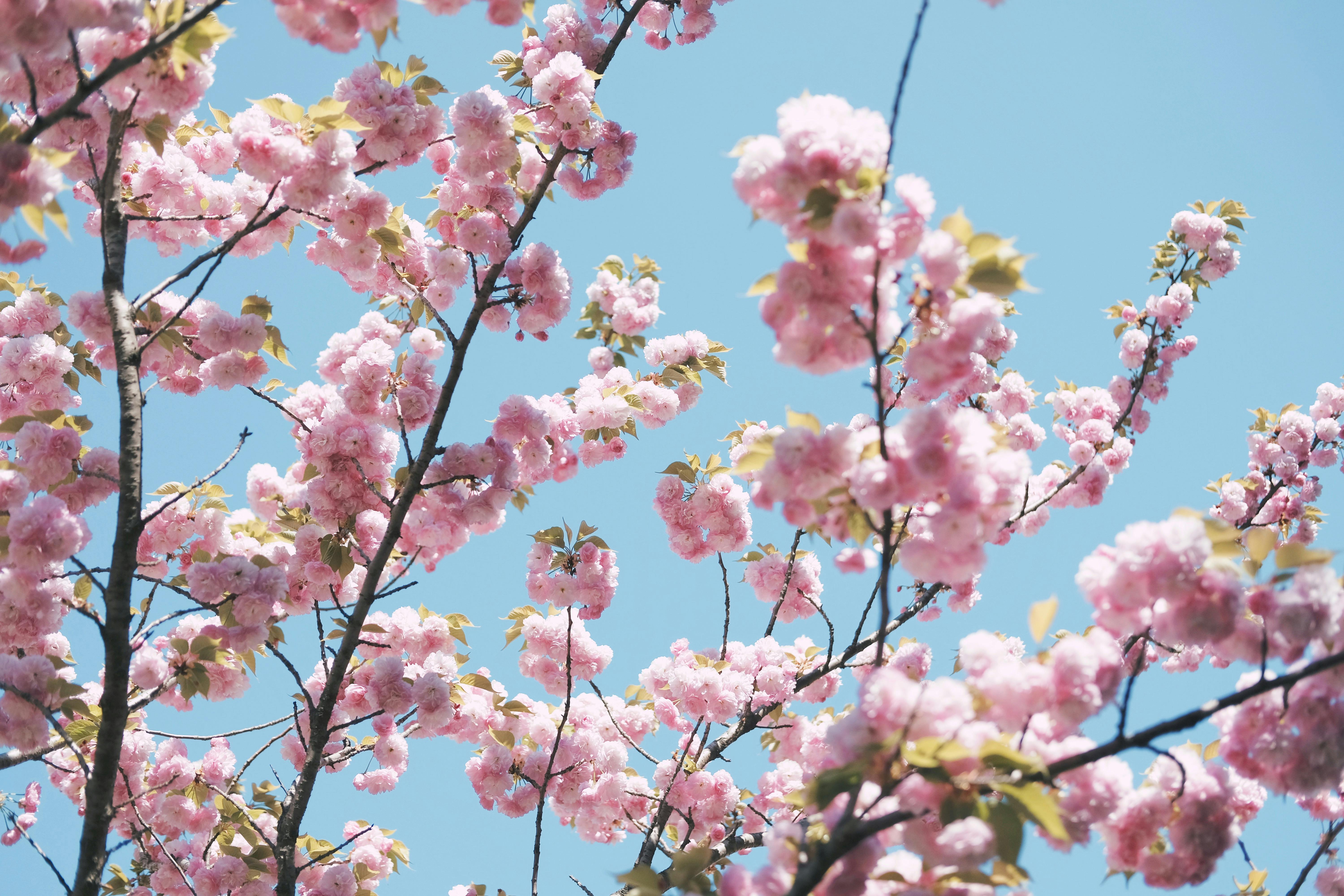
Photo by Evgeny Tchebotarev
Staying Updated on Bloom Forecasts
Sakura blooming is a short-lived phenomenon, with flowers only staying in peak bloom for about a week. To ensure you time it right, keep an eye on cherry blossom forecasts. The Japan Meteorological Agency releases detailed updates covering every region.
Here’s how to stay informed:
- Bookmark forecast sites like Japan Meteorological Agency’s Cherry Blossom Updates for real-time updates.
- Use apps like WeatherNews Japan, which offer location-based bloom tracking.
- Be flexible: If you miss a bloom period in one area, consider traveling further north, where blossoms bloom later.
With a bit of planning and attention to detail, your sakura viewing trip will be as magical as you’ve imagined.
The Best Sakura Festivals in Japan
Spring in Japan is synonymous with vibrant cherry blossom festivals that bring people together in celebration of nature’s fleeting beauty. From grand city events to quiet regional gatherings, these festivals highlight both Japan’s love for sakura and its diverse cultural heritage. Here’s a guide to some of the best cherry blossom festivals across Japan that you won’t want to miss.
Tokyo Cherry Blossom Festivals
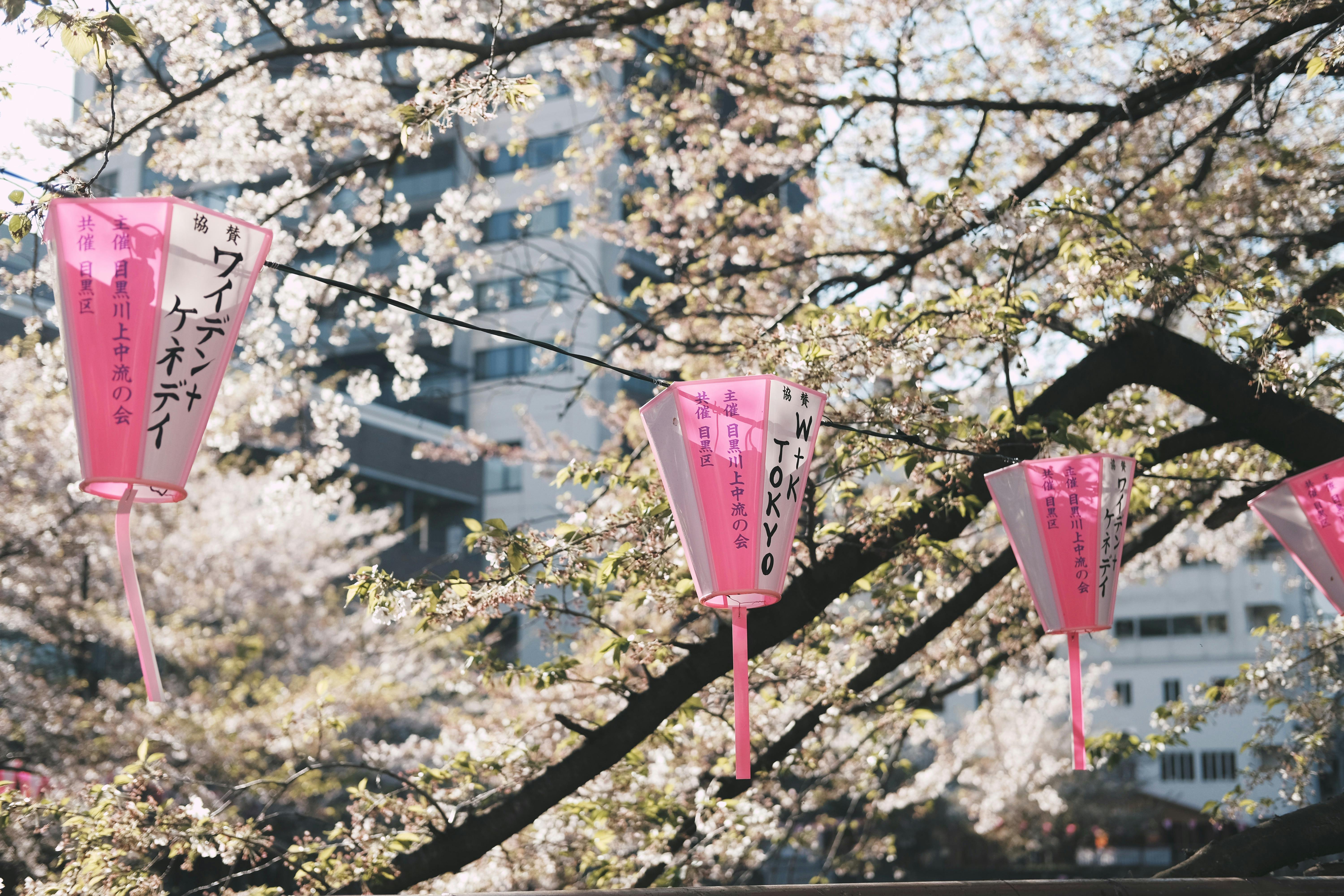
Photo by Evgeny Tchebotarev
Tokyo offers some of the most vibrant sakura festivals, attracting locals and tourists alike. Among the standout events is the Ueno Sakura Matsuri in Ueno Park. This festival typically takes place in late March to early April, timing perfectly with the full bloom of the park’s 1,000+ cherry trees. The atmosphere is lively, featuring street food stalls, cultural performances, and night illuminations. Families and friends gather to enjoy picnics under the blossoms, creating a festive ambiance that truly captures the spirit of hanami. For more details, visit Ueno Cherry Blossom Festival.
Other popular festivities in Tokyo include those at Chidorigafuchi and Sumida Park, where scenic riverside views add an extra layer of charm. Whether it’s traditional music, food vendors, or just the flowers themselves, Tokyo’s cherry blossom festivals deliver something for everyone.
Kyoto and Osaka Celebrations
In Kyoto, the Maruyama Park Festival is one of the most iconic sakura events. Known for its enormous weeping cherry tree that glows beautifully under night illuminations, this festival is a must-see. The park buzzes with energy as visitors enjoy seasonal treats and take in cultural performances. Another highlight in Kyoto includes sakura spots along the famed Philosopher’s Path, where you can enjoy a serene stroll surrounded by blooming trees. Check out Kyoto’s Cherry Blossoms and Festivals for additional information.
Osaka provides a more modern twist on sakura celebrations with events such as the Ogimachi Cherry Blossom Festival, which combines the beauty of flowers with a lively, party-like atmosphere. You’ll also find unique experiences like the Japan Mint Sakura Passage, where you can walk through a stunning tunnel of cherry blossoms. For more festival options, visit Osaka Cherry Blossom Festivals.
Nighttime Sakura Events (Yozakura)
One of the most magical ways to enjoy cherry blossoms is during yozakura, or nighttime viewing. When the sun goes down, sakura trees are illuminated, creating an otherworldly glow. Maruyama Park, located in Kyoto, is famous for its weeping cherry tree illumination, which serves as the centerpiece of its nighttime festivities. Visitors flock to this park to see the sky-high tree turned into a glowing masterpiece. Learn more about Maruyama Park yozakura events at Seven Must-Visit Night Sakura Spots.
Other great nighttime viewing spots include Tokyo’s Rikugien Gardens and Sumida Park. Both offer tranquil yet enchanting experiences, with fewer crowds compared to their daytime counterparts. If you love photography, don’t forget your camera; yozakura is a feast for the lens.
Regional Festivals Across Japan
Beyond the major cities, regional sakura festivals offer a more intimate and culturally rich experience. These smaller events often highlight local traditions:
- Hirosaki Cherry Blossom Festival (Aomori): Held at Hirosaki Castle, this northern Japan festival is known for its dramatic views of cherry blossoms reflected in the castle’s moats.
- Kintai Bridge Festival (Yamaguchi): Visitors gather at this historic wooden bridge, surrounded by cherry blossoms, for a traditional celebration.
- Matsue Castle Festival (Shimane): This lesser-known gem features a historic castle framed by delicate blooms, offering both serenity and culture.
Each of these festivals presents a new way to appreciate sakura while exploring Japan’s diverse regions. If you’re looking for a guide to various local events, visit A Complete Guide to Cherry Blossom Festivals in Japan.
From grand city parks to quiet rural gatherings, sakura festivals across Japan showcase the country’s love for its fleeting blossoms. Whether your travel style leans toward bustling cities or calm countryside, Japan has a cherry blossom festival perfect for you.
Sakura-Themed Food and Souvenirs
Spring in Japan isn’t just about flowers; it’s a feast for the senses. From delicate sakura-flavored treats to intricate keepsakes, cherry blossom season brings an array of unique experiences that go beyond the blooms. Whether you’re indulging in seasonal culinary delights or picking up handcrafted mementos, every item reflects the fleeting beauty of sakura.
Sakura-Inspired Treats
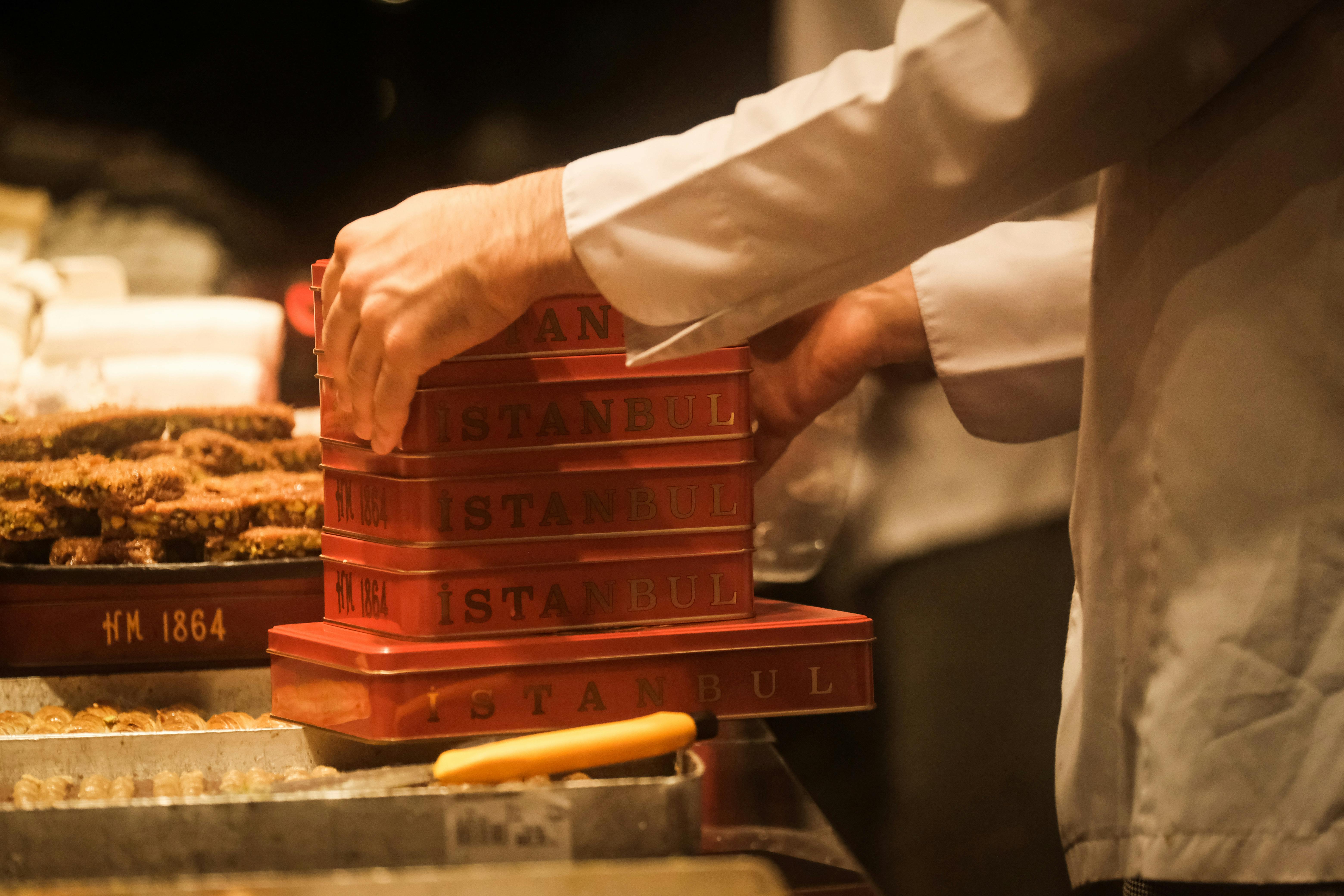
Photo by Oğuz Kandemir
Food inspired by cherry blossoms is a highlight of spring in Japan. These treats not only look stunning but also carry the essence of sakura in every bite.
- Sakura Mochi: A seasonal favorite featuring sweet red bean paste wrapped in chewy, pink rice cake and a salted cherry blossom leaf. It’s a perfect balance of sweet and salty flavors, representing the harmony of the season. Learn more about sakura mochi here.
- Sakura-Flavored Drinks: Major chains like Starbucks Japan release limited sakura beverages every spring. Think pink lattes topped with petals or sakura frappuccinos that taste as good as they look. Discover Tokyo’s sakura-themed offerings.
- Sakura Cheesecakes and Snacks: Bakeries across Japan go all out with sakura-infused cakes, ice creams, and even crackers. The light floral undertones give these creations a unique twist that’s unforgettable.
Some snacks and sweets also include edible sakura flowers, adding an authentic seasonal touch. Whether you’re enjoying these with green tea or as a gift for friends, they’re a must-try for anyone visiting during cherry blossom season.
Crafts and Keepsakes
Cherry blossoms inspire not just food, but also art and craftsmanship. Across Japan, you’ll find handmade goods that capture the delicate allure of sakura in creative forms.
- Handmade Jewelry: Earrings, necklaces, and bracelets featuring sakura motifs are easy to find. Look for pieces made with real pressed blossoms encased in resin to carry a piece of spring wherever you go.
- Ceramics: Traditional Japanese teacups and plates adorned with painted cherry blossoms make great souvenirs. These items are both functional and beautiful, offering a lasting connection to your sakura experience.
- Sakura-Themed Kimono Accessories: From hairpins to obi belts, sakura designs appear in traditional attire every spring. These items are perfect for adding a cultural touch to your wardrobe.
- Woodblock Prints and Art: For something truly special, consider purchasing a piece of ukiyo-e (woodblock print) featuring sakura scenery. Many artists focus on scenes of cherry blossoms framing iconic landmarks like Mount Fuji.
If you want something more casual, retailers also offer a range of sakura-themed tumblers, notebooks, and plush toys. These simple mementos make for wonderful gifts and everyday use.
Visiting during sakura season isn’t just about viewing the blossoms – it’s an immersive experience filled with flavors, textures, and artistry grounded in this fleeting yet unforgettable sign of spring.
Conclusion
Seeing sakura bloom in Japan is an unforgettable adventure, blending natural beauty with cultural tradition. With proper planning, you can time your visit to align with peak flowering periods in iconic cities or serene countryside spots.
Take advantage of tools like bloom forecasts and travel guides to maximize your experience. Book accommodations early and remain flexible as weather can shift seasonal timelines.
Sakura season is fleeting but magical. It’s more than just flowers; it’s a chance to reflect on life’s beauty and transience. Start planning your trip now and create memories that will linger long after the petals fall.

